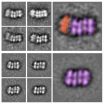(Press-News.org) Coordinating product placement with advertising in the same television program can reduce audience loss over commercial breaks by 10%, according to a new study in the Articles in Advance section of Marketing Science, a journal of the Institute for Operations Research and the Management Sciences (INFORMS).
Synergy or Interference: The Effect of Product Placement on Commercial Break Audience Decline is by David A. Schweidel, Associate Professor of Marketing at Goizueta Business School, Emory University, Natasha Zhang Foutz, Assistant Professor of Marketing at McIntire School of Commerce, University of Virginia, and Robin J. Tanner, Assistant Professor of Marketing at Wisconsin School of Business, University of Wisconsin-Madison.
"A 10% reduction in audience loss could generate substantial gains for networks and advertisers in the $600 billion ad industry that routinely measures and competes for audience changes in terms of a tenth of a ratings point," says Foutz.
Using second-by-second audience tuning, product placement, and advertising data provided by Kantar Media, the study finds that product placement affects the extent to which viewers tune away during subsequent commercials in the same television program. The authors reveal that this relationship depends on the nature of the brands and products featured in the product placement and advertisement, as well as the timing of the advertisement relative to the product placement. The study finds that product placement from different categories and brands can contribute to increased audience loss during the first advertisement of a break, which may stem from general message fatigue.
This story reverses, however, when the product placement and advertising are conducted for the same brand. In particular, when the same product is featured in the placement and the ad, the audience loss during the ad decreases by 5%. The largest synergy between product placement and advertising occurs when the placement and ad feature the same brand but different categories, giving rise to a 10.8% reduction in audience loss. According to author Tanner, "the synergistic effects that we observe reveal that the strategic use of product placement can contribute to increased audience sizes during a brand's subsequent commercials." But, reaping these benefits requires tight coordination between advertisers and the TV networks, especially as the synergies are lower when the placement and ad do not appear close together within the program.
The study also reveals that the synergistic benefits extend beyond the brand engaged in both product placement and advertising. That is, by reducing the audience loss during the first commercial of a break, the audience level for the remainder of the commercial break is higher. As a result, all subsequent advertisers in the same commercial break can benefit from the coordination of placement and advertising by the brand airing the first commercial. Networks also stand to benefit, because increased audience levels during commercials may make their programs more appealing for advertisers. Given these potential benefits, Schweidel suggests that "networks should consider providing marketers with an incentive to better coordinate their placement and advertising activities."
"Ads can't be effective if they're not seen," says Schweidel. "Our findings suggest that product placement efforts may offer two routes of effectiveness for marketers. One. as its own form of advertising, embedded within the program, and a second by increasing the reach of traditional television advertising." Based on the study findings, marketers may be in a better position to negotiate deals that include both product placement and advertising; networks might encourage such negotiations as the increased audience levels persist throughout the entire commercial break. Simply coordinating the timing of placements and commercials within the program can enable the same ad to reach a larger audience.INFORMATION:
About ISSMS
The authors of the study are members of the INFORMS Society for Marketing Science (ISMS). ISMS is a group of scholars focused on describing, explaining, and predicting market phenomena at the interface of firms and consumers.
About INFORMS
INFORMS is the leading international association for professionals in analytics and operations research (O.R.). INFORMS advances research, and develops and promotes best practices in analytics and O.R. through collaboration, knowledge sharing, and professional development. INFORMS helps business, government, and other organization professionals make better decisions to drive value to their organizations and society. Our certification program (CAP®), highly cited publications, educational meetings and conferences, continuing education, industry and process focused networking communities, competitions, and recognition provide professionals with the knowledge and connections they need to achieve ever greater value for their organizations. The INFORMS Society for Marketing Science (ISMS), a subdivision of INFORMS, is a leader in fostering the development, dissemination, and implementation of knowledge, basic and applied research, and science and technologies that improve the understanding and practice of marketing. Further information about INFORMS, analytics, and operations research is at http://www.informs.org or @informs and further information about the INFORMS Society for Marketing Science (ISMS) is at https://www.informs.org/Community/ISMS. END
Product placement can curb TV commercial audience loss by more than 10 percent: INFORMS study
Potential for large benefit to $600 billion ad industry
2014-10-15
ELSE PRESS RELEASES FROM THIS DATE:
Key moment mapped in assembly of DNA-splitting molecular machine
2014-10-15
UPTON, NY—The proteins that drive DNA replication—the force behind cellular growth and reproduction—are some of the most complex machines on Earth. The multistep replication process involves hundreds of atomic-scale moving parts that rapidly interact and transform. Mapping that dense molecular machinery is one of the most promising and challenging frontiers in medicine and biology.
Now, scientists have pinpointed crucial steps in the beginning of the replication process, including surprising structural details about the enzyme that "unzips" and splits ...
ORNL research reveals unique capabilities of 3-D printing
2014-10-15
OAK RIDGE, Tenn., Oct. 15, 2014—Researchers at the Department of Energy's Oak Ridge National Laboratory have demonstrated an additive manufacturing method to control the structure and properties of metal components with precision unmatched by conventional manufacturing processes.
Ryan Dehoff, staff scientist and metal additive manufacturing lead at the Department of Energy's Manufacturing Demonstration Facility at ORNL, presented the research this week in an invited presentation at the Materials Science & Technology 2014 conference in Pittsburgh.
"We can now ...
Transforming safety net practices into patient-centered medical homes -- progress report
2014-10-15
October 15, 2014 – A recently concluded demonstration project made meaningful progress toward introducing a "patient-centered medical home" approach at "safety net" practices serving vulnerable and underserved populations. Lessons learned in the course of developing and implementing the Safety Net Medical Home Initiative (SNMHI) are featured in a special November supplement to Medical Care. The journal is published by Lippincott Williams & Wilkins, a part of Wolters Kluwer Health.
The supplement presents nine original papers sharing "experience and learning" from ...
Bullies in the workplace
2014-10-15
AMES, Iowa – The stories are shocking and heartbreaking, but they are often disjointed and hard to follow. In severe cases, the narratives are even more chaotic. This is reality for victims of workplace bullying and a major reason why they stay silent, said Stacy Tye-Williams, an assistant professor of communications studies and English at Iowa State University.
No one expects to go to work and feel as though they are back on the school playground, but bullying is all too common for many workers. Approximately 54 million workers, or 35 percent of U.S. employees, ...
Sharks that hide in coral reefs may be safe from acidifying oceans
2014-10-15
A study published online today in the journal Conservation Physiology has shown that the epaulette shark (Hemiscyllium ocellatum) displays physiological tolerance to elevated carbon dioxide (CO2) in its environment after being exposed to CO2 levels equivalent to those that are predicted for their natural habitats in the near future.
Atmospheric CO2 levels have increased by almost 40% in the last 250 years, and the world's oceans have absorbed more than 30% of the additional CO2. The resulting rise in seawater CO2 and associated reduction in pH – known as ocean ...
Sheltering habits help sharks cope with acid oceans
2014-10-15
A shark's habitat can reduce its sensitivity to rising CO2 levels, according to Australian scientists.
Globally, ocean acidification - linked to emissions of greenhouse gases - remains a major concern and scientists say it will harm many marine species over the next century.
Researchers from the ARC Centre of Excellence for Coral Reef Studies (Coral CoE) at James Cook University have found that the epaulette shark, a species that shelters within reefs and copes with low oxygen levels, is able to tolerate increased carbon dioxide in the water without any obvious physical ...
Subsidies help breast cancer patients adhere to hormone therapy
2014-10-15
A federal prescription-subsidy program for low-income women on Medicare significantly improved their adherence to hormone therapy to prevent the recurrence of breast cancer after surgery.
"Our findings suggest that out-of-pocket costs are a significant barrier" to women complying with hormone therapy, said Dr. Alana Biggers, assistant professor of clinical medicine at the University of Illinois at Chicago College of Medicine, and lead investigator on the study. Programs that lower these costs can "improve adherence -- and, hopefully, breast cancer outcomes -- for low-income ...
Dolphin 'breathalyzer' could help diagnose animal and ocean health
2014-10-15
Alcohol consumption isn't the only thing a breath analysis can reveal. Scientists have been studying its possible use for diagnosing a wide range of conditions in humans — and now in the beloved bottlenose dolphin. In a report in the ACS journal Analytical Chemistry, one team describes a new instrument that can analyze the metabolites in breath from dolphins, which have been dying in alarming numbers along the Atlantic coast this year.
Cristina E. Davis and colleagues note that studying dolphins' health is about more than preserving their populations — the ...
Discarded cigarette ashes could go to good use -- removing arsenic from water
2014-10-15
Arsenic, a well-known poison, can be taken out of drinking water using sophisticated treatment methods. But in places that lack the equipment or technical know-how required to remove it, it still laces drinking water and makes people sick. To tackle this problem, scientists have come up with a new low-cost, simple way to remove arsenic using leftovers from another known health threat — cigarettes. They report their method in ACS' journal Industrial & Engineering Chemistry Research.
Jiaxing Li and colleagues explain that naturally occurring and industry-related arsenic ...
Academies call for consequences from the Ebola virus epidemic
2014-10-15
The Ebola virus is spreading rapidly and to an unexpected extent. The outbreak does not follow the patterns experienced in the past and the virus shows a new disease dynamic in regions, where it has never been recorded before. For this reason, the German National Academy of Sciences Leopoldina, acatech – the German Academy of Science and Engineering, and the Union of the German Academies of Sciences and Humanities have presented a statement on the Ebola epidemic today.
In the statement the academies call for the following consequences to be taken: To combat the ...
LAST 30 PRESS RELEASES:
Tracing the quick synthesis of an industrially important catalyst
New software sheds light on cancer’s hidden genetic networks
UT Health San Antonio awarded $3 million in CPRIT grants to bolster cancer research and prevention efforts in South Texas
Third symposium spotlights global challenge of new contaminants in China’s fight against pollution
From straw to soil harmony: International team reveals how biochar supercharges carbon-smart farming
Myeloma: How AI is redrawing the map of cancer care
Manhattan E. Charurat, Ph.D., MHS invested as the Homer and Martha Gudelsky Distinguished Professor in Medicine at the University of Maryland School of Medicine
Insilico Medicine’s Pharma.AI Q4 Winter Launch Recap: Revolutionizing drug discovery with cutting-edge AI innovations, accelerating the path to pharmaceutical superintelligence
Nanoplastics have diet-dependent impacts on digestive system health
Brain neuron death occurs throughout life and increases with age, a natural human protein drug may halt neuron death in Alzheimer’s disease
SPIE and CLP announce the recipients of the 2025 Advanced Photonics Young Innovator Award
Lessons from the Caldor Fire’s Christmas Valley ‘Miracle’
Ant societies rose by trading individual protection for collective power
Research reveals how ancient viral DNA shapes early embryonic development
A molecular gatekeeper that controls protein synthesis
New ‘cloaking device’ concept to shield sensitive tech from magnetic fields
Researchers show impact of mountain building and climate change on alpine biodiversity
Study models the transition from Neanderthals to modern humans in Europe
University of Phoenix College of Doctoral Studies releases white paper on AI-driven skilling to reduce burnout and restore worker autonomy
AIs fail at the game of visual “telephone”
The levers for a sustainable food system
Potential changes in US homelessness by ending federal support for housing first programs
Vulnerability of large language models to prompt injection when providing medical advice
Researchers develop new system for high-energy-density, long-life, multi-electron transfer bromine-based flow batteries
Ending federal support for housing first programs could increase U.S. homelessness by 5% in one year, new JAMA study finds
New research uncovers molecular ‘safety switch’ shielding cancers from immune attack
Bacteria resisting viral infection can still sink carbon to ocean floor
Younger biological age may increase depression risk in older women during COVID-19
Bharat Innovates 2026 National Basecamp Showcases India’s Most Promising Deep-Tech Ventures
Here’s what determines whether your income level rises or falls
[Press-News.org] Product placement can curb TV commercial audience loss by more than 10 percent: INFORMS studyPotential for large benefit to $600 billion ad industry





